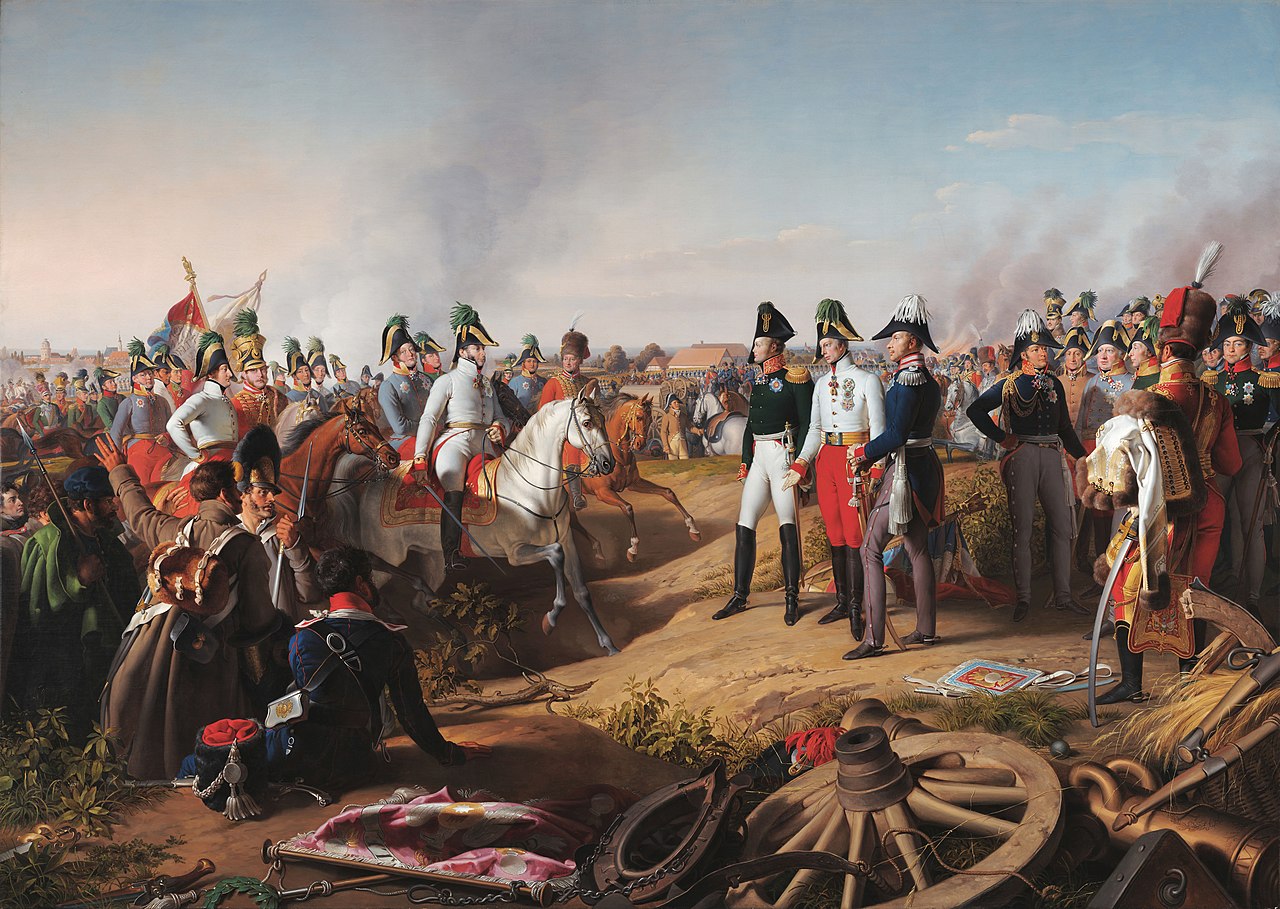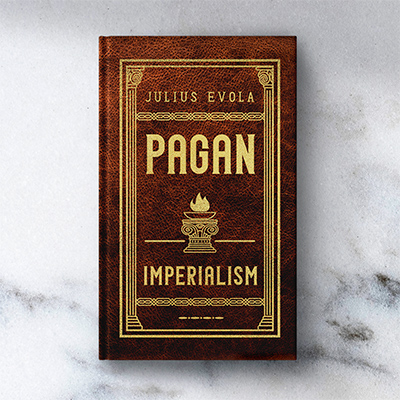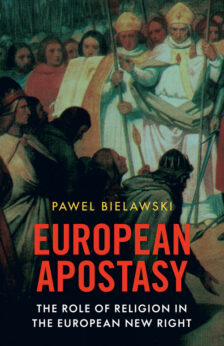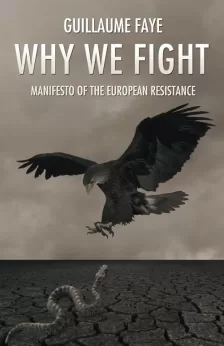Currently, pan-Slavic sentiments are becoming stronger in Russia, while in Germany, there is a partial resurgence of Germanophilia. Both tendencies align with contemporary trends and are characterised by a positive, healthy attitude. Nevertheless, it is well-known that the Slavic and Germanic worlds have often stood in stark opposition to each other. The intensification of conflicts between them repeatedly led to wars and the mutual destruction of peoples who are essentially related. Such wars, however, have always been advantageous only to a third party, regardless of who it was at the time — the belligerents suffered the damage.
A classic example of this is the Second World War, where both Germans and Russians fell victim to American interests. Recently, the opposition between the Germanic and Slavic worlds has been exacerbated again in connection with NATO’s eastward expansion — a development that could lead to tensions and conflicts if the accumulating problems are not defused in a timely manner. Highlighting this danger with due emphasis is one of the main objectives of my discourse.
Let us take a look at our roots. Germans and Russians alike belong to the Europid branch of the White race and are originally part of the Indo-European or ‘Aryan’ community, which formed between the sixth and fourth millennia BC in Eastern Europe. Contemporary archaeologists, anthropologists, linguists, and mythologists have gathered numerous pieces of evidence for this. It is also considered proven that the Aryan homeland was located in the area of present-day Russia and that the ancestors of the Hyperborean gods like Zeus, Leto, Artemis, and Apollo were born in the region of today’s Slavs.
After the formation of the individual tribes, Germans, Balts, and Slavs inhabited neighbouring regions in eastern and northern Europe: the basins of the rivers ‘Labe’ (Elbe), ‘Odra’ (Oder), ‘Wisla’ (Vistula), Danube, and Dnieper, as well as the coasts of the Baltic and Black Seas. Not infrequently, they followed the same geographical routes. The Varangian-Rus used waterways already explored and navigated by the Goths. Odin (Wotan), the chief god of the Aesir, came from Troy, which Snorri Sturluson’s Edda refers to as Asgard, to Scandinavia. Similarly, in Asia Minor, a region already early settled by Indo-Europeans, several traces of a proto-Russian civilisation were discovered.
The situation during the so-called Migration Period was extraordinarily complex. It would be more accurate to speak of conquest expeditions rather than ‘migrations’ since the barbarian tribes that invaded the Roman Empire from northwestern Europe in the 5th century AD conquered southwestern Europe and founded their own states there. In the West, it is often believed that the Germans predominated among the barbarians. Indeed, Germanic leaders generally led the Alemanni, Suebi, Goths, Vandals, and Franks, who founded their own states. This does not mean, however, that the armies of the barbarian peoples consisted exclusively or predominantly of Germans. Vandals and Goths, who broke out of Slavic, Venetic, and Scythian territories at the same time as the Alans, were of mixed origin. It is very difficult to determine the proportion of individual tribes among the total number of people involved in the migration, but it is indisputable that Slavic tribes were among them, especially considering that the names of several famous barbarian chieftains are known to be of Slavic origin: Gonsorik, Vandal, Bus.
The origin of the Russians remains an open question among scholars to this day. Ancient records state that the Russians were Varangians and that they subdued the Slavs under the Rurikids. This would mean that the ‘Russians’ were not originally Slavs. This fact is the reason for the endless debates between ‘Slavophiles’ and proponents of the Norman theory. The ‘Slavophiles’ continually present new arguments for the advanced state of the sedentary Slavic civilisation in the first millennium AD, whose achievements were based on Scythians, Veneti, and Goths; the ‘Normanists’ discover new facts about the ancient Russians, Rugians, and Ruthenians, who lived in central and eastern Europe.
What has been said so far is sufficient to convincingly demonstrate the European origin of Russian culture. The Asian influence, of course, cannot be ignored, but I deliberately avoid using the term ‘Eurasian’ here to emphasise the European character of the Slavic-Russian race and culture. The adoption of Christianity by the Kievan or Novgorodian ‘Rus’ between the ninth and twelfth centuries completed the formation of state and church institutions according to the European model, thus paving the way for a Byzantine-style state structure.
Subsequently, the Mongol-Tatar dominance under the so-called Golden Horde ensued. Russia lost its independence for some time. However, it did not become completely ‘Tatarised’, as Western Russophobes often claimed. Moscow emerged as a prominent centre because it realised the unity of the Russian lands. Naturally, the new capital was ‘more Asian’ in style than Kiev or Novgorod; essentially, though, the Muscovite tsardom remained primarily Eastern European-Byzantine.
The pages in the history book associated with Peter the Great — who consciously laid the foundation for the ‘Germanisation’ of Russia and founded the new capital, St. Petersburg, specifically for this purpose — are well known, so they will only be briefly mentioned here. Peter’s entourage and his successors from the Romanov dynasty always sought blood ties with old German families. The origins of the most famous empresses — Catherine II (born Sophie Friederike Auguste von Anhalt-Zerbst) and the wife of Nicholas II (Alexandra Feodorovna, born Alice of Hesse-Darmstadt) — speak for themselves.
This blood relationship, the increasingly strong economic and military ties, and the shared Christian religion created the conditions for Russia to become a European great power. The military alliance against Turkey, participation in the anti-Napoleonic coalition, and the Holy Alliance sealed at the Congress of Vienna in 1814-1815 between Russia, Prussia, and Austria were all results of fruitful Russo-German cooperation and joint strategy, as well as extremely skilful conservative diplomacy.
It would certainly be an exaggeration to claim that Russia then exclusively oriented its foreign policy and ambitions towards Germany; after Napoleon’s defeat, French influence on the Russian nobility was supplanted by German influence. Since Nicholas I, German education, literature, music, fashion, and — of course — the German military system have inspired people. In the army returning from its European campaigns, the so-called ‘Prussian style’ emerged. Zhukovsky and Gogol sometimes read like Schiller and E. T. A. Hoffmann; Odoevsky studied Schelling; Glinka, Mussorgsky, and Borodin were enthusiastic about the music of Beethoven and Wagner; the ethnographer Afanasyev further developed the mythological school of the Brothers Grimm; Tyutchev, who lived in Germany, found friends and supporters for Russia in the higher echelons of society.
Even the revolutionaries found mentors from Germany. Bakunin was known to be a great admirer of Hegel and popularised his ideas; furthermore, he was a personal friend of Richard Wagner. The circle of Germanophiles among the dialecticians also included Belinsky and Herzen. Lenin was also a passionate admirer of Hegel, but his dialectics were of a particular kind. This fierce revolutionary of mixed Russian-German-Jewish origin drew much of his worldview from the teachings of Marx, Engels, and other social democrats and communists, who were all internationalists, which certainly did not correspond to classical German philosophy. In this sense, Marx is a classic example of a superficially German influence that was, in reality, sharply opposed to the German spirit.
The influence of Nietzsche (who, incidentally, also had Slavs among his ancestors) was felt somewhat more organically but no less revolutionarily. The salon elite in Russia under Nicholas II — including Dmitry Merezhkovsky, Vyacheslav Ivanov, Rozanov, Bely, Bryusov, and several other literary aesthetes — perceived Zarathustra as a revelation that suddenly provided them with new insights. A whole generation of painters emerged, calling for a ‘revaluation of all values’.
It can rightly be said that the revolution came to Russia from German soil. This does not refer to the revolution in the narrow sense of social and political struggle but rather a qualitative change in people’s worldview during the transition from one epoch to another. Scientific and technological progress, the shift in art, the class struggle of the proletariat, the old Russian spirit of rebellion, Jewish social criticism, and the anti-imperialist struggle of the peoples — all these and many other factors merged into a stream full of contradictions.
The construction of socialism in the Soviet Union and the Third Reich, which exhibited many common but also contrasting features, must also be considered from this perspective.
After 1917, the German National Socialists learned much from the Bolsheviks, but this should not be seen as merely imitating the experiences of the October Revolution. From the beginning, there was a strong Russophile sentiment among the intellectuals in Germany. Before writing The Decline of the West, Spengler had read Danilevsky’s Russia and Europe, which, in the sense of Herder and Franz von Baader, prophesied a new rising empire in the East. Another ideologue of the Conservative Revolution, Arthur Moeller van den Bruck, commented on and translated Dostoevsky into German. Goebbels wrote a novel titled Michael, the ‘novel of a German God-seeker’, very much in the spirit of Dostoevsky. Walter Schubart’s book Europe and the Soul of the East was a true apology for the Russian soul, in which the German philosopher developed Spengler’s ideas in the light of Russian thinkers of the early twentieth century. Due to his views, Schubart suffered greatly and was forced to flee from Hitler’s Germany to Riga.
It is well known that Hitler was an opponent of Slavdom; he had absorbed the works of the racial scientist and pan-Germanist Fritz Lenz, adopted the arguments of Alfred Rosenberg, who was hostile to both Russia and Christianity, and followed the advice of his strategists. However, inwardly, he envied Stalin’s strength and followed his example in many ways.
Before 1941, there was quite a bit of sympathy among the Russians for the new national-revolutionary Germany. Some saw the Germans as allies in the class struggle, others as blood brothers, and still others as war allies. Indeed, a comparison of the Nazi style with the Bolshevik style reveals many similarities: the anti-capitalist work ethic, military uniformism, promotion of sports and a healthy lifestyle, and neoclassicism in architecture, sculpture, and painting. It was therefore only natural that the Soviet Union and the Third Reich objectively sought to conclude a mutual peace pact.
Geopolitical attractions between the two powers had been noticeable long before the signing of the Molotov-Ribbentrop Pact. As revealed by recently discovered documents, it is indisputable that Soviet Russia secretly assisted in the rearmament of the Reichswehr despite the Versailles Treaty as early as 1922/1923. Secret German-Soviet factories, airfields, as well as tank and anti-aircraft schools were maintained on Soviet territory; military experts exchanged their experiences. After Hitler came to power, Soviet-German cooperation ceased, and as is known, the 1939 pact could not prevent war between the two states.
Those who found themselves in Germany and supported Hitler later fell into the trap of war: leaders of the pro-Nazi ROND (Russian National Liberation Movement), convinced ‘Little Russians’, as well as the Germanophile Cossack Ataman Krasnov and General Vlasov, who created the Russian Liberation Army RONA under his leadership. The German intelligence services never trusted the Russian émigrés and always sought to keep them under control. There were only isolated exceptions, such as the emigrated Baltic German Rosenberg. Ultimately, both sides lost.
Who benefited from the mutual destruction of the Soviet Union and the Third Reich? Primarily the United States, Great Britain, Freemasonry, and international banking capital. Although on the side of the victors, Russia emerged from the war devastated, bled dry, and starved. Germany, also bled dry and devastated, was divided into occupation zones. Simultaneously, the USA initiated the founding of new international organisations like the UN and NATO, and the state of Israel was established in the Middle East. The spheres of influence were determined by the USA, yet they allowed the Soviets to control part of eastern Europe, including East Germany. However, even the Soviet Union, with its communist and internationalist ideology, was significantly influenced, if not overseen, by the USA. The Americans supported only those Russian actions that contributed to their own strengthening. All this gradually led to the USA’s economic and military dominance in Europe, with which the Germans are more familiar than the Russians.
It is known that scepticism towards the USA is growing again in today’s Germany. At the same time, interest in the new Russia is awakening; new Russophile sentiments are emerging. How could it be otherwise? Russia offered the Germans the possibility of reunification, turned away from the chimera of Marxism and reconnected with its old European and Aryan roots. Meanwhile, the Americans invest their capital in Western Europe, but in reality, they only want to create new markets and achieve super-profits, striving for global supremacy and the establishment of a new world economic order — all supposedly in the interest of the Europeans.
In Russia, attitudes towards the Germans have changed. Information about Germany’s history and culture and its modern characteristics is provided objectively. Participants of the Second World War no longer see the ‘Fritzes’ as mortal enemies, even if they cannot forget many things. Among the youth, Germanophile tendencies are spreading; there is a genuine, lively interest in the experiences of the Third Reich. One could even speak of a national-socialist style as a fashion; this style can be easily recognised in the ideology and aesthetics of some organisations and New Right magazines (Elementy, Ataka, Nasledie Predkov [Ancestral Heritage], Imperiya, Sturmovik), as well as in the repertoire of modern rock bands.
Today, Russian thinkers are seriously engaged in developing new geopolitical models that assign Germans and Russians decisive positions in organising the new Euro-Asian space and creating new political and military structures on the continent. The legal aspects of a Russian-German federation are particularly addressed by the ‘Institutional Society” founded by B. Wiedemann in Berlin, which publishes an international information bulletin titled Imperativ; this is a new organ committed to the conservative revolution that, together with the ‘European Synergon’, works on the theoretical foundations of the future continental empire.
It is still too early to speak of the results of these projects, as we are only at the beginning of our journey. However, the first steps have already been taken. We know something about each other and have the opportunity to exchange information and concepts. It is very important, from the outset, to find the right tone when dealing with each other directly, without unnecessary intermediaries. This will make it possible to gradually achieve the targeted goal: the German-Russian partnership of the future.







